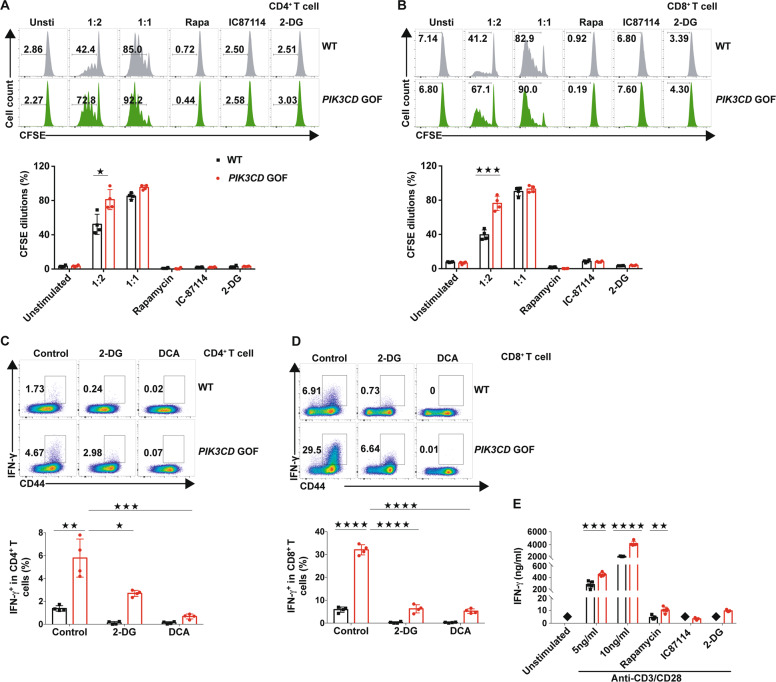Fig. 6.
Inhibiting glycolysis abolished T cell proliferation and activation caused by PIK3CD GOF. a, b CFSE-labeled TNaive cells from WT and PIK3CD GOF mice were stimulated with anti-CD3 and anti-CD28 antibodies for 72 h in the presence or absence of rapamycin, IC87114, 2-DG or vehicle as a control, and CFSE dilutions in (a) CD4+ T cells and (b) CD4+ T cells were determined by flow cytometry (n = 4 per group). c, d Naive T cells from WT and PIK3CD GOF mice were stimulated with anti-CD3 and anti-CD28 antibodies for 24 h in the presence or absence of 2-DG, DCA or vehicle as a control, and the proportion of IFN-γ-producing cells in c CD4+ T cells and d CD4+ T cells was determined by flow cytometry (n = 4 per group). e Naive T cells from WT and PIK3CD GOF mice were stimulated with anti-CD3 and anti-CD28 antibodies for 24 h in the presence of rapamycin, IC87114, 2-DG or vehicle as a control. After that, the concentration of IFN-γ in the medium was determined by ELISA (n = 5–6 per group). Solid black squares denote the concentration of IFN-γ in the medium below the detection limit. Numbers adjacent to outlined areas represent the percentage in the area. Data are shown as the mean ± SD for 3–6 independent experiments. ★P < 0.05, ★★P < 0.01, and ★★★★P < 0.0001 determined by two-way ANOVA

